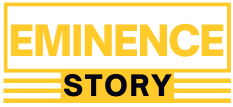
The schedule includes medical care, therapy, group activities, and wellness practices to help individuals develop coping skills and maintain long-term sobriety. Drug rehab programs vary in length, from short-term options of a few weeks to long-term residential programs lasting up to a year, offering tailored care to address individual needs. Each program provides different levels of support, incorporating detox, therapy, and aftercare to promote how long is drug rehab sustained recovery.
- Almost 40.3 million U.S. residents over the age of 12 suffered from substance use disorder in 2020.
- What happens in drug rehab includes a structured schedule that incorporates medical treatment, therapy, educational sessions, and recreational activities to support recovery.
- If you or someone you know is struggling with addiction, seeking professional help is important.
Dissecting the Definition of Eating Disorders

Insurance works for rehab treatment by covering part or all of the costs of inpatient and outpatient addiction care, depending on the policy and provider. Most insurance plans, including private insurance, Medicaid, and Medicare, offer some level of coverage for substance use disorder treatment. Coverage varies based on factors such as the type of plan, the state of residence, and whether the rehab facility is in-network or out-of-network. Many insurance providers require pre-authorization and have limits on the duration of stay or types of services covered. The cost of inpatient drug rehabilitation on average cost between $20,000 and $35,000 for a 30-day program. The cost varies widely based on factors such as the type of facility, level of care, and geographic what is alcoholism location.
- Regardless of the program length, inpatient rehab offers a foundation for recovery, equipping individuals with the tools and support needed for a healthier, substance-free future.
- If you or a loved one are ready to seek treatment for drug or alcohol addiction, call AAC at .
- Long-term rehabs also give you more time to develop the skills you’ll need to thrive when you return home – healthy habits for the long haul.
- Some programs last just a week or two, while some others last months, and still others can last up to a year.
Alcohol Detox Drink
The length of short-term programs can be extended by going to outpatient treatment after inpatient treatment wraps up. Luxury rehab provides high-end accommodations, alternative therapies like yoga and acupuncture, and personalized treatment plans. These facilities cater to individuals seeking privacy, comfort, and exclusive amenities while undergoing addiction recovery. A treatment center will attempt to verify your health insurance benefits and/or necessary authorizations on your behalf. We cannot guarantee payment or verification eligibility as conveyed by your health insurance provider will be accurate and complete.
Length Of Detox
Though diarrhea typically stops around this time, the patient will still experience chills, goosebumps, and vomiting, as well as abdominal cramping. As one can see, the combination of symptoms experienced during opiate withdrawals tends to present much like those of the flu. Throughout the first month or so, cravings will gradually decrease after the acute withdrawal symptoms have subsided. Between months two and four of sobriety, people typically “hit a wall” where depression overcomes the individual, often causing cravings to return.

Client Family Testimonial

These programs may require anywhere from six to 20 or more hours of someone’s time per week. However, those that opt for the 60 and 90-day program get ample time for intensive detox and treatment to ensure a full recovery. The 90-day program has shown the highest success rate due to the time spent treating severe addictions. Rapid detox may shorten rehab time but is exceptionally unpredictable even under controlled conditions and extremely dangerous. Therefore, it is advised to discuss extensively with a medical professional some possible alternatives with lesser physical and mental health risks. Medication-Assisted Treatment (MAT) combines FDA-approved medications with therapy to treat opioid and alcohol addiction.

